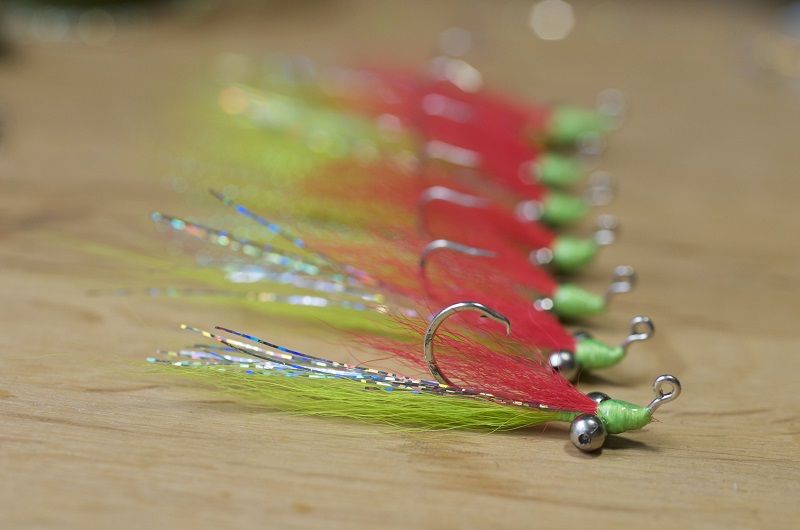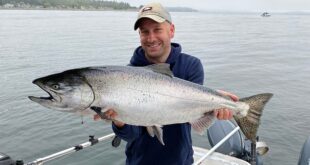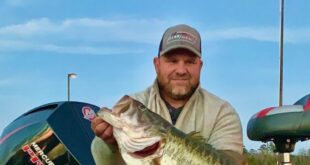Fly Fishing For Crappie Fishtankfacts.com There are a few things you need to know when fly fishing for crappie. First, you should use non-tapered leaders and 3x or 4x tippet. You will also need to pick out a buggier fly. Crappies aren’t picky, but they prefer flies that look buggier. Ideally, you will use size 8 flies. Also, you should use subsurface flies to get the best results.
Leech patterns
Leech patterns are excellent choices for fly fishing for crappie. They imitate a minnow or insect, and are effective in shallow water. Crappie prefer to take prey from below, but they will take topwater flies, especially later in the season. Leech patterns can be used with entry-level fly gear. In addition, they’re forgiving of mistakes and are a great choice for beginners.
Leech patterns are also great for river fishing. They can be dead-drifted, stripped, and jigged. In addition to dead-drifting, they can also be fished with rabbit or marabou fur. The movement of a leech pattern is irresistible to fish. Leech patterns come in many varieties, and the right one will depend on the conditions and type of water.
Leech patterns come in a wide range of colors and sizes. While black is the most common color, tying leech patterns in maroon, olive, gray, and brown will also work well. Another benefit of leech patterns is that they don’t have to be too long. While leeches can grow to six inches, the most common sizes are between one and two inches. These are the sizes most trouts are willing to attack.
The DDH leech is a versatile leech pattern that’s easy to tie. It has multiple colors, making it easier for the average fly fisher to select the right one for a particular situation. The colors can be natural baitfish or reactionary colors. These leech patterns are tied with bead chains of varying sizes. These beads help create a variety of jigging action for the fish.

Jigs – Fly Fishing For Crappie
Jigs are a great choice for targeting crappies with fly fishing equipment. They are designed to sink in the water column and reach deep areas where these fish are typically found. A small bobber is ideal, because it’s easily adjustable and won’t interfere with your casting. You can also use a large, high-floating fly, which will act as a strike indicator as well as a lure on the surface.
When choosing a fly, try to choose a size that matches the weight of the fly rod. Jigs that are too large will not work as well. A medium-weight rod is a good choice for this type of fly fishing. This type of rod can handle dry flies, streamers, and nymphs. You should also consider the location and time of year.
Crappie tend to prefer a variety of colors, so try different colors. Some prefer solid black, while others may prefer yellow or lime green. A favorite among crappie fly fishers is the maribou jig, which is made from feathers or hairs tied to a lead head jig hook. It can be solid or have a fringed tail.
Crappie fly fishing is easier when you have a good location. The fish typically hang around submerged structures such as old tree trunks and boat docks. This allows you to drop your fly close to the structure, and often brings an immediate strike. Be sure to use a strong leader and rod to avoid getting tangled.

Float (bobber) – Fly Fishing For Crappie
A float (bobber) can be very important in fly fishing for crappie. If you don’t use a float, your bait may end up hanging in the water. Because crappie can be color selective, switching colors is necessary to improve your chance of catching a bite.
There are many types of bobbers available. A small slip bobber is inexpensive and works well when floating at a specific depth. A bobber that is a little larger will work better for fly fishing for crappie. Make sure the bobber is large enough to float the weight of the line.
Murray recommends using a chartreuse float that has the bottom part painted orange. This provides clear contrast and helps keep the float level in the water. Another advantage of using a float is that the nature of a crappie’s bite will change the attitude of the bobber. Most of these fish don’t slash, as do bass, but instead strike and hold the jig.
When using a bobber, you need to set the stopper on the bobber so that it doesn’t get stuck in the line. You should then use a split shot weight to prevent the bobber from sliding down onto the hook. A bait hook and live minnows should be tied on the end of the line. A swivel will also prevent the line from twisting while you are fishing.

Spoons – Fly Fishing For Crappie
When you are fly fishing for crappie, you need to have the right fly for the job. One of the most important things to consider is the type of water you’re fishing in. The water you’re fishing will determine whether you should fish with a spoon or a spinner. If you’re fishing in a smaller stream, a spoon will be the best option.
Spoons come in many shapes, sizes, and colors, and will be more effective on a trolled or steady retrieve. Crappie typically prefer bright chrome spoons, but other colors will also work. One popular option is the Johnson Spoon, a curved metal piece with a single hook and weed guard. Other companies also make similar offerings.
You’ll also need fly fishing gear, including a fly, and some artificial lures that imitate flies. These lures will attract the crappie, and then you can reel in the catch with a fishing net. You’ll also need a fishing rod, a fishing line, and tippet. A fly will also need a leader of at least 5 inches. If you’re fishing for crappies on a lake, it’s important to have the right equipment.
Crappie are a top game fish in the United States. Their meat is white, fine-textured, and excellent for eating. In fact, many people consider crappie to be one of the best tasting freshwater fish.

Nymph patterns
Nymph patterns for crappie fly fishing should imitate various types of food to trigger a response from the fish. The basic concept is that a fly that mimics baitfish needs to move rapidly in the water column, and should mimic the normal darting motion of a minnow. This cadence is often deadly for crappies, so it is important to vary the length of the strip as well as its speed, and stop briefly when you reach a target. Nymphs that imitate bugs should swim slower.
Some of the best nymph patterns for crappie fly fishing are imitations of crawfish and minnows. These patterns are very effective during the summer, when the fish feed on minnows. Some examples of these patterns include the Clouser Minnow, Zonker, and Mickey Finn. You should also use bright colors when fishing for crappie, and pausing frequently during the retrieve is important for success.
Crappies aren’t very picky when it comes to color. In general, any fly with enough movement will do, but certain colors are better for certain locations. For instance, if the water is murky and there is no visibility, a flashy fly won’t be effective. You should also try fishing in warm water to ensure the best results.
If the water is cold, try jigging. While this method is not recommended for very cold water, it does produce results when used properly. It is best for shallow water, and the fly shouldn’t be too heavy. Just make sure you pause and slowly lower your fly to the bottom.

Locations to find crappie
When looking for good locations to fish for crappie, look for bays that have a mucky bottom and are located on the northern end of the lake. These bays absorb the most sunlight and are ideal pre-spawn habitats. Look for weed patches in these areas as these are where the crappie like to feed. These weedy pockets are ideal for fishing minnow patterns.
Some of the best locations for crappie from the bank include Black Lake, located near the towns of Campti and Creston, near Natchitoches. The shallower part of the 13,500-acre lake is home to plenty of black crappie. Those looking for a deeper lake can head over to Clear Lake. This lake also contains great crappie fishing, but be sure to bring plenty of bait and use a jigging device.
Another excellent location is Caddo Lake. This lake is a great choice for fishing because it is surrounded by dense vegetation and is shallow. You can also try fishing in the nearby Bull Lake slough or the cuts in Open Mouth Bayou. Whether you’re in a kayak or have a boat, these waters are ideal for crappie fishing. And the best part is that they’re delicious!
In the winter months, crappie will be hanging out in pockets of thick weed growth. They’ll be looking for a warm place to gather. In addition to these shallow spots, try fishing on ice. This is a great way to catch large slabs!

Read also:
 Fish Tank Facts Fish Tank Facts and About Aquarium
Fish Tank Facts Fish Tank Facts and About Aquarium


